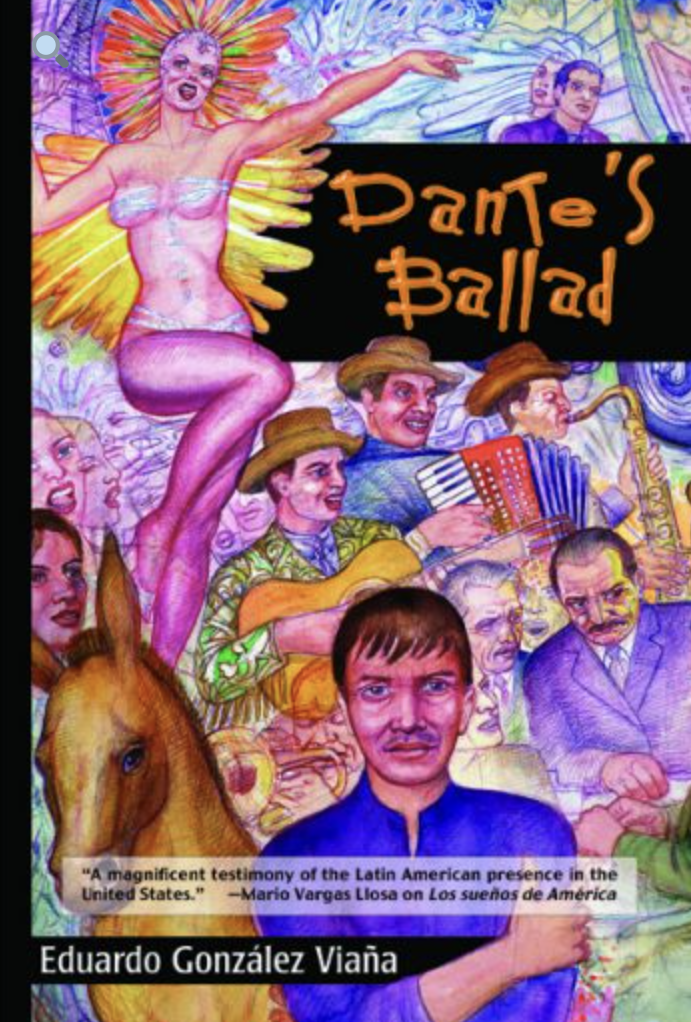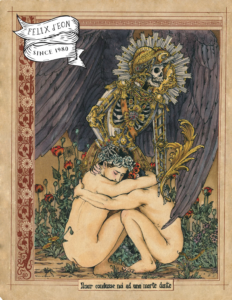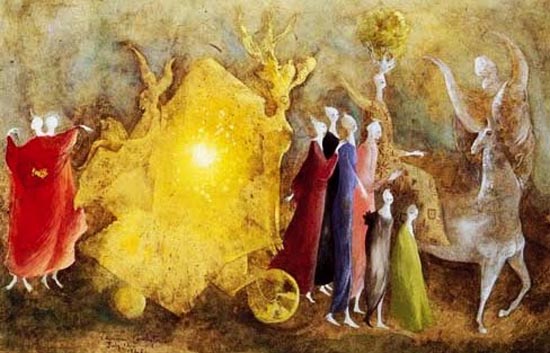“An original painting by Felix d’Eon available as a giclee print with a stamp indicating it is an original from the Felix d’Eon studio in Mexico, archival, fine art paper, ink” —Felix d’Eon, Amor Condusse noi ad una Morte, Etsy, (retrieved on February 29, 2024)
“The love that moves the sun and the other stars…,” Florence Leyret Photography
Tumblr post by user Florence Leyret Photography captioned a post with the last line of Paradiso —Florence Leyret, “The love that moves the sun and the other stars…,” Tumblr, February 4, 2017 (retrieved February 29, 2024)
Decay of Humanity by Mechanical Hydra
 Decay of Humanity is a 2012 album by metal band Mechanical Hydra. The art for the album cover features a colored version of Gustave Doré’s illustration, The Schismatics – Mahomet. The illustration is of Canto 18 of the Inferno.
Decay of Humanity is a 2012 album by metal band Mechanical Hydra. The art for the album cover features a colored version of Gustave Doré’s illustration, The Schismatics – Mahomet. The illustration is of Canto 18 of the Inferno.
Find Decay of Humanity here.
Find The Schismatics – Mahomet by Gustave Doré here.
Contributed by Gianluca Giuseffi Grippa
Leonora Carrington, “Amor che move il Sole et l’altre stelle” (1946)
“[T]he title of the painting above, Amor che move il sole l’altre stelle, comes from the Italian poet and father of the Italian language, Dante Alighieri. The painting is instead by British surrealist, Leonora Carrington.
“According to one interpretation of Dante’s Divine Comedy, love is the driving force behind everything. The universe and our planet. God was, without a doubt, Dante’s — and maybe Carrington’s — meaning of ultimate love. Thus, love is as powerful as a god, and love (as God) is the most powerful source of energy and everything else (and the other stars…). [. . .] –Jess the Avocado, “Love will Move the Sun and Other Stars,” Medium, May 24
View Amor che move and other paintings by Leonora Carrington here.
Read more about Carrington’s biography and how she “feminized surrealism” in The New Yorker.
Eduardo González Viaña, Dante’s Ballad (2007).
 “Y tú, quién sabe por dónde andarás, quién sabe qué aventuras tendrás, qué lejos estás de mí.” –Eduardo González Viaña, Dante’s Ballad, 2007
“Y tú, quién sabe por dónde andarás, quién sabe qué aventuras tendrás, qué lejos estás de mí.” –Eduardo González Viaña, Dante’s Ballad, 2007
“‘Remember that we’re in the U.S.,’ Dante Celestino is told when his daughter Emmita runs away. Friends and neighbors warn him that in the United States it’s not considered so unusual for a fifteen-year-old girl to run away. But Dante had counseled Emmita to date only Spanish-speaking Hispanic boys, and never anyone who joins gangs or deals drugs. Yet she ignores her father’s advice and—right in the middle of her quinceañera—runs away with a tattooed Latino who doesn’t speak Spanish and rides a lowrider motorcycle. And to complicate matters, Dante is in the U.S. illegally, making it difficult to report the girl’s disappearance to the police.
“So begins Dante’s odyssey. Accompanied by a lame donkey named Virgilio and the voice of his dead wife, he sets out for Las Vegas, where Emmita’s boyfriend—or abductor, as Dante considers him—supposedly lives.
[. . .]
“In this bittersweet tour de force originally published in Spanish as El Corrido de Dante, the First and Third Worlds join hands, and Mexican pueblo life and Internet post-modernity dance together in one of the most memorable fables to shed light on issues such as immigration, cultural assimilation, and the future of the United States with its ever-increasing Latino population.” –Arte Público Press
Learn more about Dante’s Ballad by Eduardo González Viaña at the publisher’s website here.



